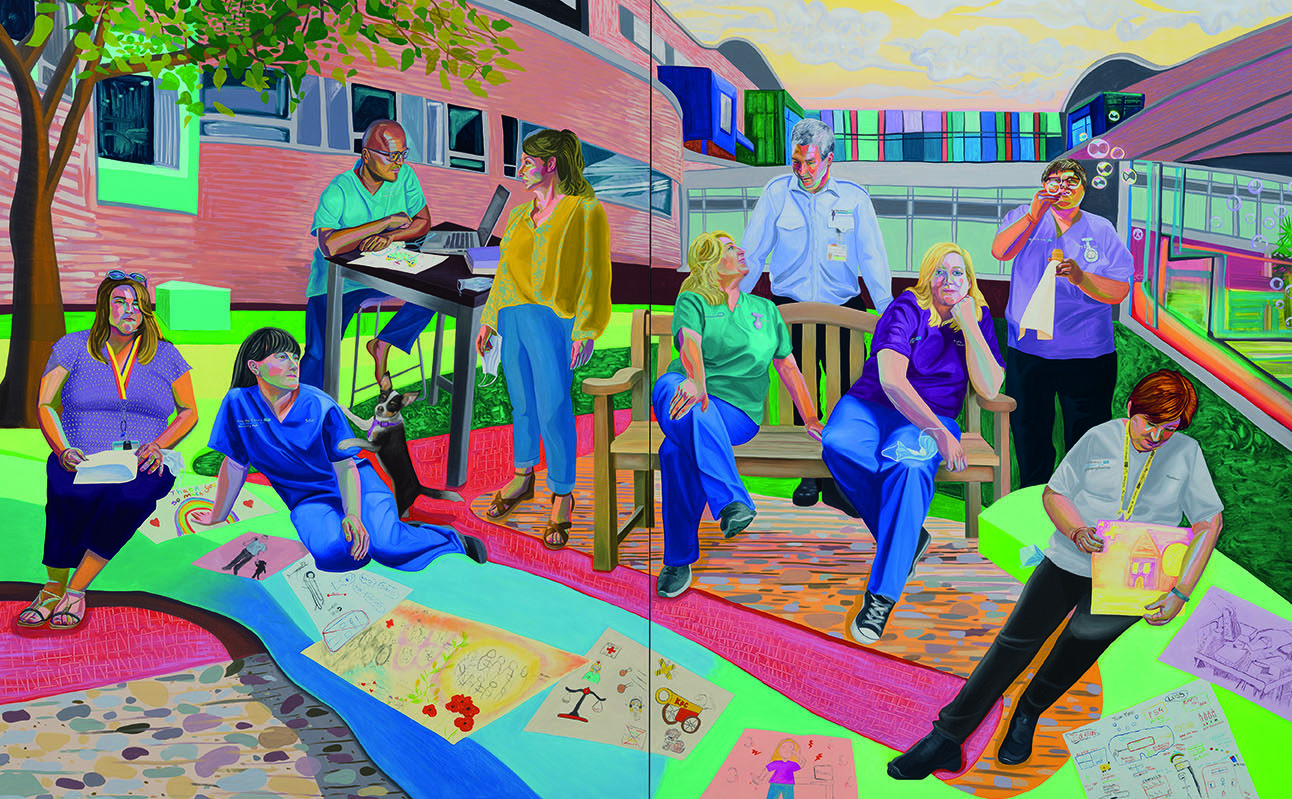Community in colour
New York artist Aliza Nisenbaum depicts Liverpool’s NHS workers during the pandemic in vibrant large-scale paintings
New York-based Mexican artist Aliza Nisenbaum is best known for her bold, colourful portraits of immigrants to the US. Her work instils the everyday with dynamism, inviting viewers into the vibrant world her subjects inhabit.
“It’s the energy of people in a room which affects the way I paint them,” she explains via a transatlantic telephone line. “And, of course, they are then the first witnesses to the work being created, coming alive, and I get immediate feedback from them. Painting someone in real life means the colours I use are directly affected by meeting them in person. Painting someone who’s in the same room really makes it much more of a collaboration.”
Early last year Nisenbaum began preparing a project focused on Liverpool. She was set to paint the people involved with the city’s council-owned allotments and the culture surrounding them. A previous collection of paintings depicted people in a Minneapolis community scheme exploring the benefits of cultivating their own fruit and vegetables, so this wasn’t to be entirely new ground. But, as the artist says, “allotments really are something so particular to England.”
“After a site visit I was so excited about spending a three-month residency working in Liverpool but then the pandemic hit,” explains Nisenbaum, who was forced to change tack. Impressed by the British show of collective appreciation for frontline workers via a weekly doorstep clap, she opted to begin painting nursing staff from Alder Hey Children’s Hospital. With travel restrictions in place, this obviously forced the artist to adopt new working methods.
“It’s been surprising how great it was to meet these people online and have long conversations over Zoom. I got to hear about their lives and what they’ve been going through during what has been such a pressurised time,” Nisenbaum says. “I directed the photographer we hired in Liverpool, Dan Bentley, to take many, many different photographs to work from after each conversation with the medical staff. In some ways it was actually a great way to work.”
The artist has adapted her methods in other areas too. “Since the pandemic began I’ve started working on paper with watercolours much more, which has opened up a whole new side of my practice. I usually use oil paints but the times I couldn’t get to my studio, they’re just not practical.”
Nisenbaum’s day job – she’s a professor at Columbia University’s School of the Arts – has also been affected by the pandemic. “My students have been surprisingly resilient, so they’ve found new ways to stay in touch and worked out how to share studio spaces. Young people are very strong,” she says. “The teaching I do has been online so I have missed talking to my colleagues and other painters, the social side of life, but a painter’s life is often somewhat isolated so life hasn’t changed too much.”
Nisenbaum likes to think her work helps people slow down a little and reflect. “I see it as both a document, in the way it’s an object, but also an event that has been built over time. My recent work shows key workers who have really been putting their lives on the line but I hope the colour I use gives viewers an uplifting feeling, helps shift the mood to the more positive.”

Leave a reply
Your email address will not be published.